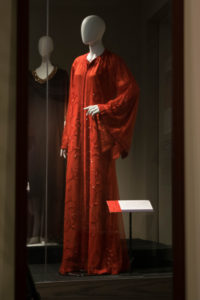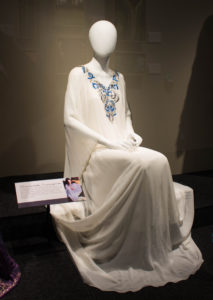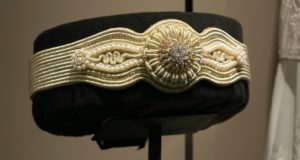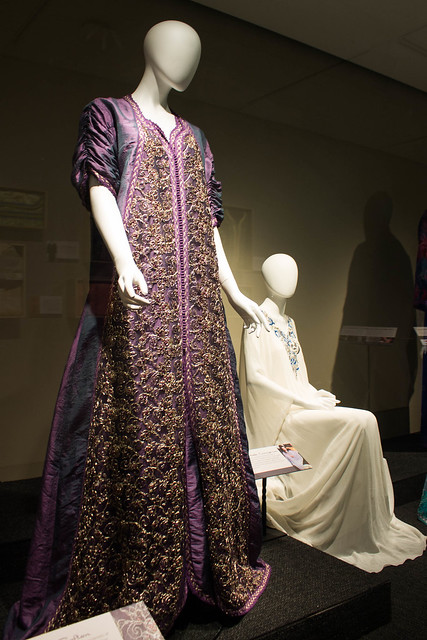What happens when traditional attire meets high fashion? The Colorado State University Avenir Museum of Design and Merchandising examines this question in “The Allure of the Moroccan Caftan.” The exhibition, curated by Marcella Wells, showcases how caftans — a traditional form of dress in many Middle Eastern and European countries — are being adopted into the haute couture (high fashion) scene in Morocco. The collection on view is on loan from Fort Collins businesswoman and Moroccan traveler Mary Biggers.
 “In the last 20 years, the fashion caftan industry has exploded in Morocco,” said Wells, an Avenir Museum volunteer.
“In the last 20 years, the fashion caftan industry has exploded in Morocco,” said Wells, an Avenir Museum volunteer.
High-fashion caftans
The exhibit describes a caftan as a loose, T-shaped garment. Although caftans have been worn by both men and women throughout history, today, they are primarily worn by women. Since the turn of the 21st century, high-fashion caftans have gained in popularity for women in the Kingdom of Morocco.
Distinguishing haute couture caftans from traditional dress form is fairly straight-forward. Traditional caftans are simple and are less decorated than haute couture caftans, which are often elaborately embellished with ornate embroidery and precious stones. These caftans, made of rich fabrics and highly decorated, typically reflect the wearer’s class and status and are often deemed more valuable.
Interactive exhibition
The exhibit allows visitors to do more than just view upscale caftans; there are also interactive components. For example, visitors can use small magnifying lenses to closely inspect the various threads, embellishments and stitch patterns on some of the caftans, and they can try on a number of caftans made available specifically for that purpose.
 Visitors can also feel sabra silk, the extremely soft but strong plant-derived silk used to embroider many caftans. Biggers and Wells believe this level of interactivity creates a deeper level of appreciation for and understanding of the design and ornamentation of Moroccan caftans.
Visitors can also feel sabra silk, the extremely soft but strong plant-derived silk used to embroider many caftans. Biggers and Wells believe this level of interactivity creates a deeper level of appreciation for and understanding of the design and ornamentation of Moroccan caftans.
However, there is more than meets the eye when it comes to caftan haute couture, particularly in understanding how Morocco strives to honor its past traditions (particularly related to this form of apparel) while at the same time be responsive to global and cultural trends.
In this aspect, “The Allure of the Moroccan Caftan” underscores the Avenir Museum’s mission to exhibit textiles and apparel from global cultures, examining how they are made and what they mean to us all. In fact, of the 20,000 objects of historic clothing and textiles in the Avenir Museum collection, about half are non-Western, meaning they come from countries other than the United States or Europe.
Nov. 16 lecture
“The Allure of the Moroccan Caftan” is a free, fun and educational experience for all to visit. The exhibition is currently open and will run until Dec. 15. An informative talk presented by Wells on Nov. 16 at 7 p.m. will feature more about the contrast of tradition and high fashion trends in Morocco’s evolving haute couture industry.
The exhibition was made possible, in part, through a grant from the Lilla B. Morgan Memorial Endowment, which works to enhance the cultural development and atmosphere for the arts at Colorado State University, as well as by the State Farm Companies Foundation Good Neighbor Grant Program. For more information about the exhibit, and to plan your visit, see the Avenir Museum website.
The Avenir Museum is part of the Department of Design and Merchandising in CSU’s College of Health and Human Sciences.
More photos from the exhibition:

